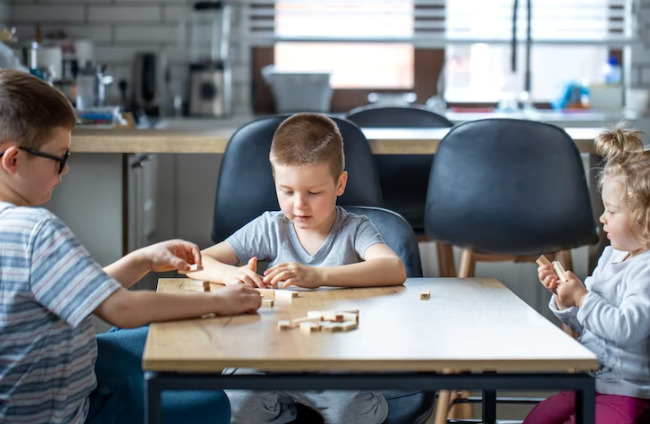
Learning styles is characterized as a concept that describes the method through which individuals acquire information about their surroundings and environment. The main types of learning styles include auditory learning – listening to a live or pre-recorded lecture; visual learning – reading a textbook or picture book; and kinesthetic or ‘hands-on’ learning – pressing buttons on a remote to understand how the device operates.
While every person has a unique style of learning, this factor plays an important role in influencing how they perform in an educational setting. However, since children diagnosed with autism spectrum disorder (ASD) have non-conforming educational and intellectual profiles, it is challenging for teachers, as well as parents or caregivers, to curate a curriculum that aligns with their abilities and to develop successful academic opportunities. As a result, the increasing incidence of autism diagnosis calls for building an improved understanding of students’ unique profiles and planning syllabi that are mindfully created by thoughtful consideration of learning styles and preferences.
Which Learning Style Does My Child Prefer?
As children on the autism spectrum primarily rely on one style of learning, it is important that you closely observe your little one’s predominant learning preference. For example, if your child mostly prefers to play with building blocks, push buttons and shapes to produce sounds or lights, open and close closets or drawers, and is constantly taking toys apart and placing them back together, these factors may indicate that he or she is a ‘hands-on’ or kinesthetic learner. On the other hand, if your child mainly learns by looking at picture books, watching TV (without or with sound), and carefully observing their surroundings, your little one is most likely a visual learner. Likewise, your child is mostly an auditory learner if he or she prefers listening to music and engaging in auditory stimulus more than consuming visually-interactive content and absorbing information by actively talking and interacting with those around them.
Let’s learn more about identifying the common learning styles of children with autism –
Visual
Visuals are appealing to children as it presents a complete picture in just a glance. Moreover, visual aids such as diagrams, flashcards, picture books, etc., can also be utilized as the beginning point for introducing the child to more challenging concepts in subjects like mathematics and science. This method of learning can help students better grasp abstract concepts, including complex feelings and emotions, as well.
Kinesthetic
Kinesthetic children learn best by touching and acquiring a tactile, hands-on experience. These learners tend to enjoy activities such as crafts, painting, playing with building blocks, and even taking toys apart so they can ultimately figure out how to put them back together again. Since hands-on learners learn best by practically engaging in an activity, they may often be observed going around the house or classroom to discover and explore things and objects with their hands.
Auditory
For students who mainly rely on their auditory abilities to grasp information, parents and teachers may observe that while these children may not always make a lot of eye contact, they are actively paying attention to what’s being said and will answer when asked a question or spoken to. Auditory learners are more inclined towards hearing information elucidated verbally and, in fact, learn better via listening and participating in conversations. Furthermore, they may also display an ardent interest in reading aloud, learning new languages, and listening to music.
Keeping these styles of learning in mind, it is also essential to note that students with ASD feel increasingly more comfortable in their general learning environment when their unique physiological, sociological, psychological, and environmental needs are adequately met. Accordingly, parents and teachers alike must develop an aptitude for carefully analyzing different ability profiles to create learning spaces that are more enriching, encouraging, and welcoming for children on the autism spectrum. These steps would not only help generate more successful academic experiences but also boost the child’s enthusiasm toward learning and intellectual development.
Effectively Supporting Your Child’s Learning Style
When parents, as well as teachers, recognize that every student possesses a unique set of needs and preferred learning styles, they are more equipped to develop a learning environment that is conducive to success. Researchers focused on exploring different learning styles have also found that high-risk students benefit most from instruction tailored and personalized according to their preferred learning style.
Therefore, it is important that teachers and parents identify the child’s preferred mode of learning as soon as they enter the school system or a home-based learning environment and establish efforts to adapt their methods based on the student’s strengths and abilities. This will certainly ensure that the child has the greatest chance for academic success!
You can also explore real-world experiences that augment your child’s learning and understanding. For example, if your child is highly interested in and passionate about wildlife, or animals in general, a great idea is to visit a petting zoo or an animal shelter. Through this, the child will gain a more holistic view and will also be able to develop a wider understanding of the world. In addition to helping your child retain more information, such experiences present your little one with meaningful insights in a way that sufficiently meets their individual learning style.
Remember that parents and teachers have a significant influence on children. And in this regard, early childhood therapies and programs, such as those offered by Early Autism Services (EAS), are uniquely optimized in a manner that supports and caters to your child’s strengths and requirements. For more information on this, feel free to get in touch with us by requesting a free consultation or speaking with our expert clinician (+91 8929153820) today!


